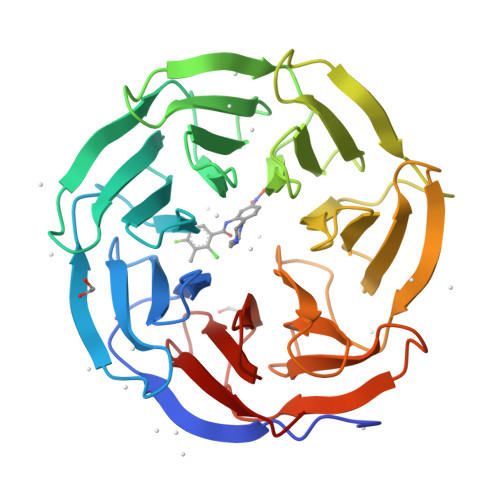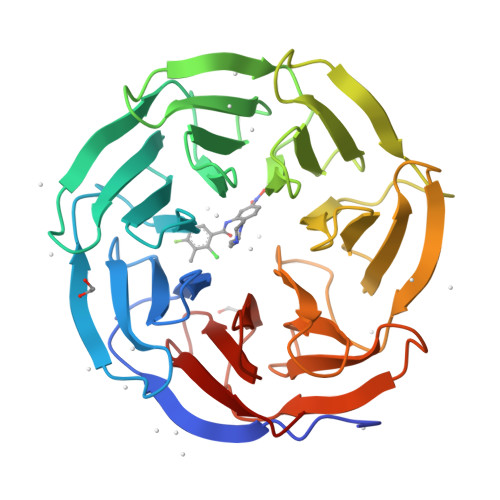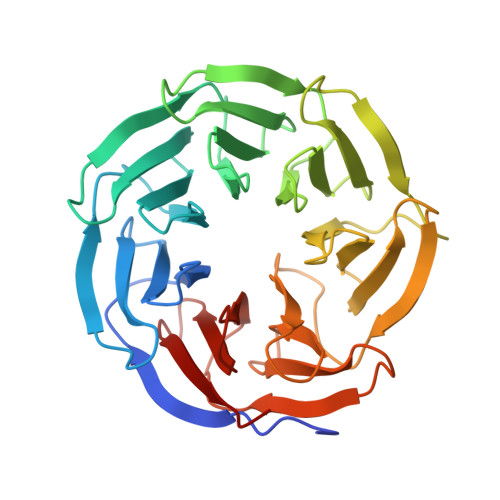Synthesis, Optimization, and Evaluation of Novel Small Molecules as Antagonists of WDR5-MLL Interaction.
Bolshan, Y., Getlik, M., Kuznetsova, E., Wasney, G.A., Hajian, T., Poda, G., Nguyen, K.T., Wu, H., Dombrovski, L., Dong, A., Senisterra, G., Schapira, M., Arrowsmith, C.H., Brown, P.J., Al-Awar, R., Vedadi, M., Smil, D.(2013) ACS Med Chem Lett 4: 353-357
- PubMed: 24900672
- DOI: https://doi.org/10.1021/ml300467n
- Primary Citation of Related Structures:
4IA9 - PubMed Abstract:
The WD40-repeat protein WDR5 plays a critical role in maintaining the integrity of MLL complexes and fully activating their methyltransferase function. MLL complexes, the trithorax-like family of SET1 methyltransferases, catalyze trimethylation of lysine 4 on histone 3, and they have been widely implicated in various cancers. Antagonism of WDR5 and MLL subunit interaction by small molecules has recently been presented as a practical way to inhibit activity of the MLL1 complex, and N-(2-(4-methylpiperazin-1-yl)-5-substituted-phenyl) benzamides were reported as potent and selective antagonists of such an interaction. Here, we describe the protein crystal structure guided optimization of prototypic compound 2 (K dis = 7 μM), leading to identification of more potent antagonist 47 (K dis = 0.3 μM).
Organizational Affiliation:
Structural Genomics Consortium, University of Toronto , 101 College Street, MaRS Centre, South Tower, Toronto, Ontario M5G 1L7, Canada.



















